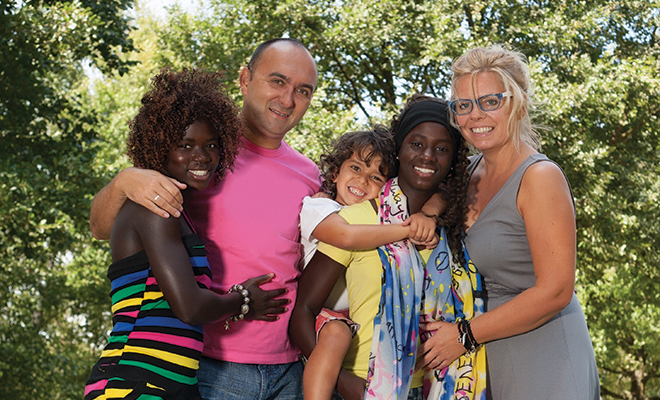
National Foster Care Month
While most people are aware of foster care as a concept, few are intimately involved with the children in our communities who desperately need safe and loving homes during traumatic times in their lives. Since May is National Foster Care Month, it’s a great time to peek behind the curtain into what foster kids and foster families experience.
Over 400,000 kids are currently in the foster care system in the United States. Approximately 34 percent of those children are living in a kinship placement, which means they are being cared for by a family member or close family friend who had a preexisting relationship with the child. The remaining 66 percent of children in foster care live in non-kin homes, or traditional foster care homes in which the foster family did not know the foster child before placement.
After having our oldest daughter biologically, my husband and I became foster parents. The arduous licensing process involved more than 40 hours of classroom training, local and FBI background checks, multiple interviews by social workers, and a complete house inspection to verify the safety and security of our home. Though the process felt daunting and overwhelming at times, I appreciated that Child Protection Services thoroughly vetted people who were willing to take children (and the modest monthly stipend that comes with them) into their homes.
Another great benefit of the intensive classes and challenging licensing process is that it moderately prepares foster parents for the demands of fostering children. Children are placed in the foster care system because they have suffered abuse or neglect, and the impacts that has on their behaviors and interactions vary. Because of this, most foster kids exhibit defiant or difficult behaviors as they process and adjust to their whole lives being turned upside down.
When a child is placed in the custody of Child Protection Services, the primary goal is always reunification with their family of origin. Once a judge determines the cause for the child’s removal, a reunification plan is created. The county provides a myriad of services for the birth parents, including counseling, inpatient and outpatient rehab, housing support, transportation to visits and appointments, and other assistance as needed. These services support birth families who often do not have the resources to meet their own needs and the needs of their children.
Each foster care case is as unique as the child in care. Some kids remain in foster care for just a few weeks, and some are in foster care for years. In most cases, the best possible outcome for a foster child is reunification with their biological parents. Children have a deep desire to be with their birth parents, and often, once a biological parent is given help and assistance, they can reunite with their kids. However, due to various reasons, including mental illness and addiction, sometimes reunification with birth parents isn’t possible. When this is the case, the child becomes eligible for adoption. The county then searches for an extended family member or a close family friend who can offer permanency for the child along with a similar cultural upbringing.
When a kinship adoptive placement cannot be found for the foster child, the social worker seeks out an adoptive foster home, which is a family that is licensed to both foster and adopt children. Many foster parents become licensed for adoption at the same time as their foster licensing, just like we did. Then for us, when the children who were staying with us as foster kids became eligible for adoption, we were able to offer that continuity and permanency for kids who had lived with us for over two years.
We adopted three children from two different families of origin through foster care. Foster parenting simultaneously was the hardest and most rewarding thing I’ve ever done. Though our story ended in adoption for us, I strongly discourage parents who are actively seeking adoption to become foster parents. Since reunification is always the initial goal of birth parents’ case plans, couples who are seeking a permanent child can easily become disillusioned by the foster care system. Throughout the process I had to remind myself that these children didn’t ask for their challenging situations and don’t deserve to have parents who can’t take care of them. What they desperately need until their home is safe to return to is a stable, loving family to meet their physical and emotional needs. Practically every county across the United States is desperate for foster families, so if you have room in your heart and room in your home, consider changing a child’s life by becoming a foster parent.
1







